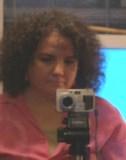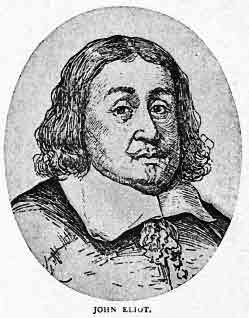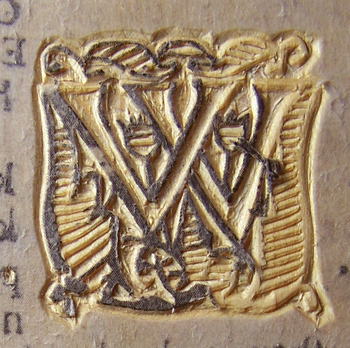Today's postings
- [Baren 39623] RE: New Baren Digest (Text) V48 #4946 (Sep 1, 2009) ("Phare-Camp")
- [Baren 39624] copyright ("Maria Arango Diener")
- [Baren 39625] Copyrights (Kris Wiltse)
- [Baren 39626] Re: Copyrights (eli griggs)
- [Baren 39627] Re: New tool for tying baren.....Update (Julio.Rodriguez # walgreens.com)
- [Baren 39628] Re: Papers (Michelle Turbide)
- [Baren 39629] Re: Copyrights (ArtfulCarol # aol.com)
- [Baren 39630] Re: copyright (thadeenz97 # verizon.net)
- [Baren 39631] Baren Member blogs: Update Notification (Blog Manager)

Message 1
From: "Phare-Camp"
Date: Tue, 01 Sep 2009 19:30:36 GMT
Subject: [Baren 39623] RE: New Baren Digest (Text) V48 #4946 (Sep 1, 2009)
Send Message: To this poster
only one color. I find it strong and it doesn't tear too easily when I use
it. I love that it prints through a jet printer easily and use it for
printing block printings over computer printouts. I used it in MY hand
bound edition of the scarecrow books I did a couple of years ago, the same
book was done in a very fine edition of 10 hardbound books in a
collaboration between me and Carol Wagner; she hand bound the scarecrow
prints that were printed on mulberry, which did just as well in the jet
printer as the masa.

Message 2
From: "Maria Arango Diener"
Date: Tue, 01 Sep 2009 22:23:53 GMT
Subject: [Baren 39624] copyright
Send Message: To this poster
http://www.artlawteam.com/2009/08/articles/copyright-2/copyright-myths-debun
ked/
Maria
www.artfestivalguide.info
www.1000woodcuts.com

Message 3
From: Kris Wiltse
Date: Tue, 01 Sep 2009 22:29:04 GMT
Subject: [Baren 39625] Copyrights
Send Message: To this poster

Message 4
From: eli griggs
Date: Tue, 01 Sep 2009 22:43:06 GMT
Subject: [Baren 39626] Re: Copyrights
Send Message: To this poster

Message 5
From: Julio.Rodriguez # walgreens.com
Date: Tue, 01 Sep 2009 23:03:39 GMT
Subject: [Baren 39627] Re: New tool for tying baren.....Update
Send Message: To this poster
clamps, David Bull has added the new item to the Baren mall printing
accessories page.
See: http://www.barenforum.org/mall/products/print_accessories.php
thanks.......Julio

Message 6
From: Michelle Turbide
Date: Wed, 02 Sep 2009 00:37:25 GMT
Subject: [Baren 39628] Re: Papers
Send Message: To this poster
I use Akua Kolor and intaglio as well. I just got some Hahnemuhl copperplate which I ordered from the makers of Akua and it works pretty good. It's thicker paper though.
Are you using a press? I wondered if you were looking for a thinner paper because you are printing by hand. The more absorbant papers seem to work with Akua. I have really good luck with Rives BFK the lighter version, but I use a press with a lot of pressure and print on dry paper.
I have also had good luck with Magnania Pescia (did I spell that right?)
Michelle Turbide
www.michelleturbide.com
www.vermontprintmaker.blogspot.com

Message 7
From: ArtfulCarol # aol.com
Date: Wed, 02 Sep 2009 01:33:24 GMT
Subject: [Baren 39629] Re: Copyrights
Send Message: To this poster
awarded $10,000 to be paid by my village. The Hartford Insurance Company was the
insurer.
Carol Lyons
Irvington, NY
In a message dated 9/1/2009 6:43:12 P.M. Eastern Daylight Time,

Message 8
From: thadeenz97 # verizon.net
Date: Wed, 02 Sep 2009 02:13:59 GMT
Subject: [Baren 39630] Re: copyright
Send Message: To this poster
It's always great to have a refresher on the law to clear out the myths and legends. But even with clearcut rules, even the most prudent of us can run afoul of these laws. This link will take you to a piece I had published recently in the Buffalo News inspired by the Shepard Fairey "Obama Hope" poster controversy: http://www.buffalonews.com/opinion/myview/story/733827.html
Jeff Dean
Napping Cat Press
www.nappingcat.blogspot.com
Digest Appendix
Postings made on [Baren] members' blogs
over the past 24 hours ...
Subject: A Labor of Biblical Proportions
Posted by: Annie B
This item is taken from the blog Woodblock Dreams.
'Reply' to Baren about this item.
Subject: The Battle Continues
Posted by: Ellen Shipley
This item is taken from the blog pressing-issues.
'Reply' to Baren about this item.


